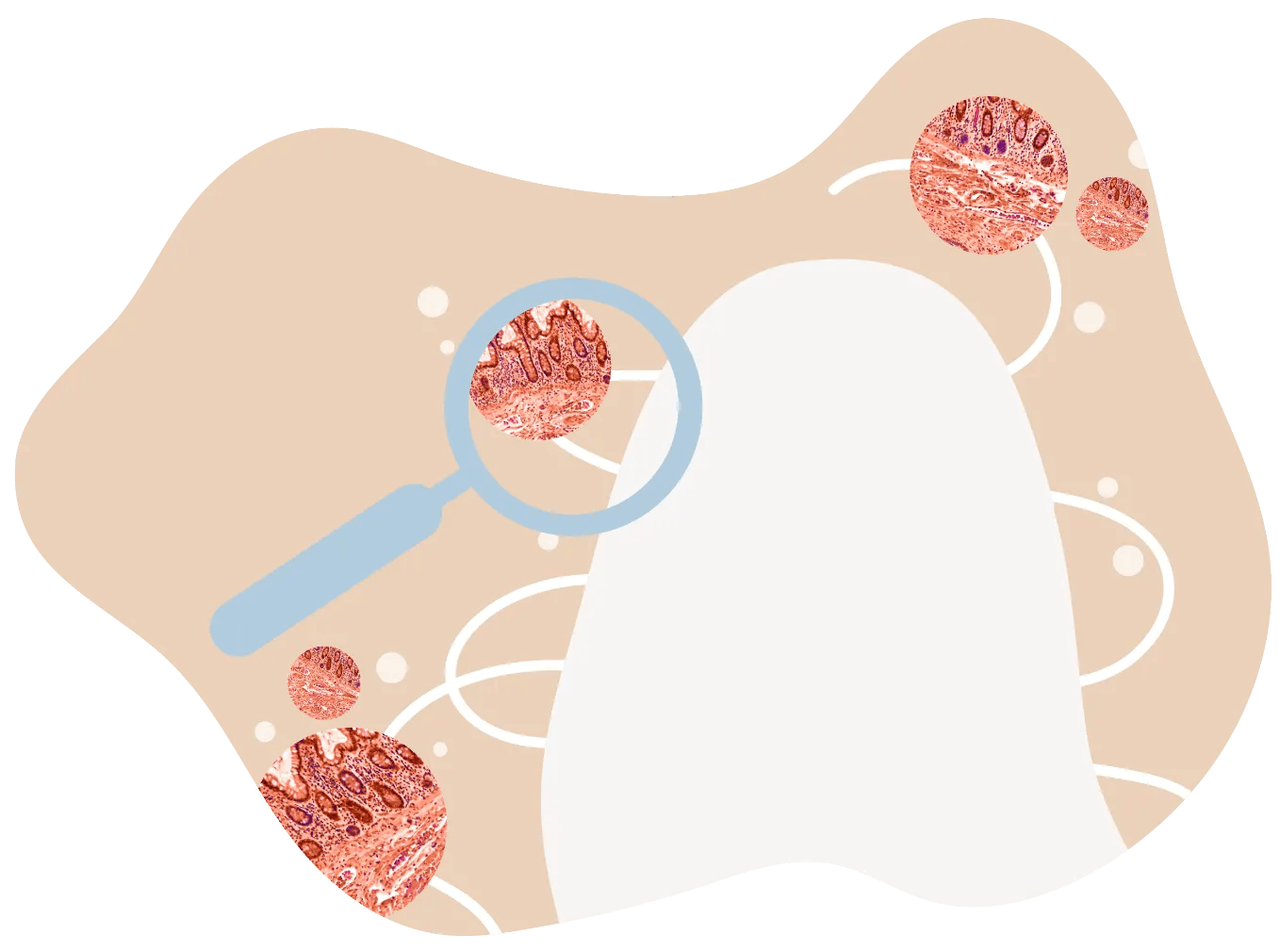This website uses cookies to enhance the user experience. By using Yoppie you are agreeing to our use of cookies.

Tampon Shedding & Fibre Loss: What Gets Left Behind?
The idea of tampon shedding isn't something many women are familiar with, but it's important to know about the risk of fibre loss in sanitary care products.
What is tampon shedding?
Why does tampon shedding happen?
Do all tampons leave fibres behind?
Should I be worried about tampon shedding?
Does what the tampon is made from make a difference?
How can you tell if a tampon has left bits inside?
What to do if you think your tampon is shedding
Quick Takeaways
Never heard of tampon shedding? You’re not the only one! Even though most women have probably experienced it without noticing, it’s not a hot topic of conversation.
In this article, we set out to demystify tampon shedding and why it might be messing with your vagina.
What is tampon shedding?
Have you ever slipped a tampon out of its wrapper and noticed a subtle fuzzy halo? Maybe even a few thin, stray wisps here and there? Well, there’s a chance - depending on the kind of tampons you’re using - that these loose fibres may become detached from the tampon and take up residency in your vagina. This is referred to as tampon shedding.
Shedding doesn’t have to be dramatic (although in very rare cases people have recorded tampons actually splitting in half) and can easily happen without you noticing. But this doesn’t mean it’s totally harmless.
So, what’s the problem with a bit of AWOL tampon fibre? Let’s take a closer look…
Why does tampon shedding happen?
During insertion and removal, friction between the tampon and your vaginal wall can loosen fibres.
The risk of tampon shedding usually depends on:
- How the tampon is constructed
- Not using the right absorbency for your flow (causing more friction on the tampon during insertion and removal which can encourage fibre loss)
This is why it’s important to look for high-quality tampons and to always choose the right absorbency for your flow.
Manufacturers also don’t actually need to prove that no shedding takes place to sell tampons. In fact, they don’t really have to prove much. Unlike incontinence pads which sit outside the body, tampons aren’t classed as medical products, so aren’t expected to adhere to strict guidelines on how they’re made. Although many companies do conduct their own rigorous testing as Yoppie does, not all do.
Crazy, right?
Do all tampons leave fibres behind?
Some tampons are much less likely to leave fibres behind than others. Yoppie’s tampons, for example, incorporate a ‘“security veil”. This is a thin membrane that surrounds the absorbent core which helps to prevent any fibres from coming loose.
We filmed a mini-experiment to see how Yoppie fared vs another well-known brand when it came to tampon shedding.
Should I be worried about tampon shedding?
Although it’s extremely rare, tampons have been linked to Toxic Shock Syndrome (TSS). Fibres left inside your body may be expelled naturally, but whilst they’re hanging out in your vagina instead of minding their own business, they can potentially act as a breeding ground for bacteria.
The advice is always to change your tampon every few hours (we advise no more than 6) to help decrease the risk of TSS. But fibres that become separated from your tampon may stay in your vagina for far longer than this. Also, although tampon shedding can be minimal, if you use several tampons each day for several days in a row, fibres can accumulate.
Bacteria growth could also increase your chances of developing a yeast infection like thrush. For Yoppie founder, Daniella, finding out about tampon shedding was one of the drives behind creating Yoppie.
"Before I started Yoppie I used to always experience thrush after my period. When I took a closer look at what could be messing with my vagina’s natural balance, I realised it wasn’t just my hormonal changes that could be the blame, but it could also be the tampons that I was using."

"Tampons that are made with super absorbent, synthetic materials are prone to shedding fibres inside the vaginal canal, creating the perfect breeding ground for bacteria, and therefore increases the risk of getting yeast infections. And surprise, surprise those mainstream, synthetic tampons were the ones I was using.
So when I developed our Yoppie tampons, I placed a lot of importance on making them in a natural material which decreases the chance of fibre loss. I never thought back in 2015, that tampons were created differently. But they are, and it’s my mission to ensure women are given the transparency they need to make healthier choices when it comes to their period care."
Does what the tampon is made from make a difference?
Although more testing is needed, there hasn’t been a huge amount of research into how different materials used in tampons affect women’s bodies. So far in the tests that have been done, there’s been no conclusive evidence that the materials used in the construction of tampons increase the risk of shedding, bacteria growth, TSS or yeast infections.
The best thing you can do to prevent tampon shedding is to look for tampons that are also fitted with a security veil.
Also, always use the right absorbency tampon for your flow to decrease friction, which can encourage fibres to rub loose.
How can you tell if a tampon has left bits inside?
Unless you go fishing around with a magnifying glass and a speculum (we don’t recommend this) then it’s pretty hard to tell unless a noticeable chunk is missing from your tampon.
If you find you’re experiencing recurrent thrush infections after your period, this could be a sign of shedding - or that your current tampons simply don’t agree with you.
What to do if you think your tampon is shedding
Firstly, don’t panic. If your tampon has shed a small amount of fibre then your body will probably expel it naturally from your vagina. No effort required. Our bodies are clever like that!
If, however, you suspect that your tampon has broken inside you and you can’t remove it yourself (make sure your hands are clean if you try this) then you may need some extra help. If you don’t have a significant other that’s up for the job (who also has clean hands) then you might need to call 111 to ask for advice.
Quick Takeaways
What is tampon shedding?
When fibres from your tampon remain in your vagina after the tampon is removed
Is it dangerous?
Your vagina should be able to naturally expel rogue fibres, but it could encourage bacteria growth and a potentially higher risk of irritation, thrush or TSS. Although, this hasn’t been looked into in-depth by the scientific community yet.
If a larger piece of a tampon breaks off and becomes stuck, if you can’t remove it yourself, you should call your GP to ensure it can be removed safely.
What can I do to prevent it?
Choose tampons with a security veil that are made from materials least likely to irritate your vagina.
Section jump
Back to top